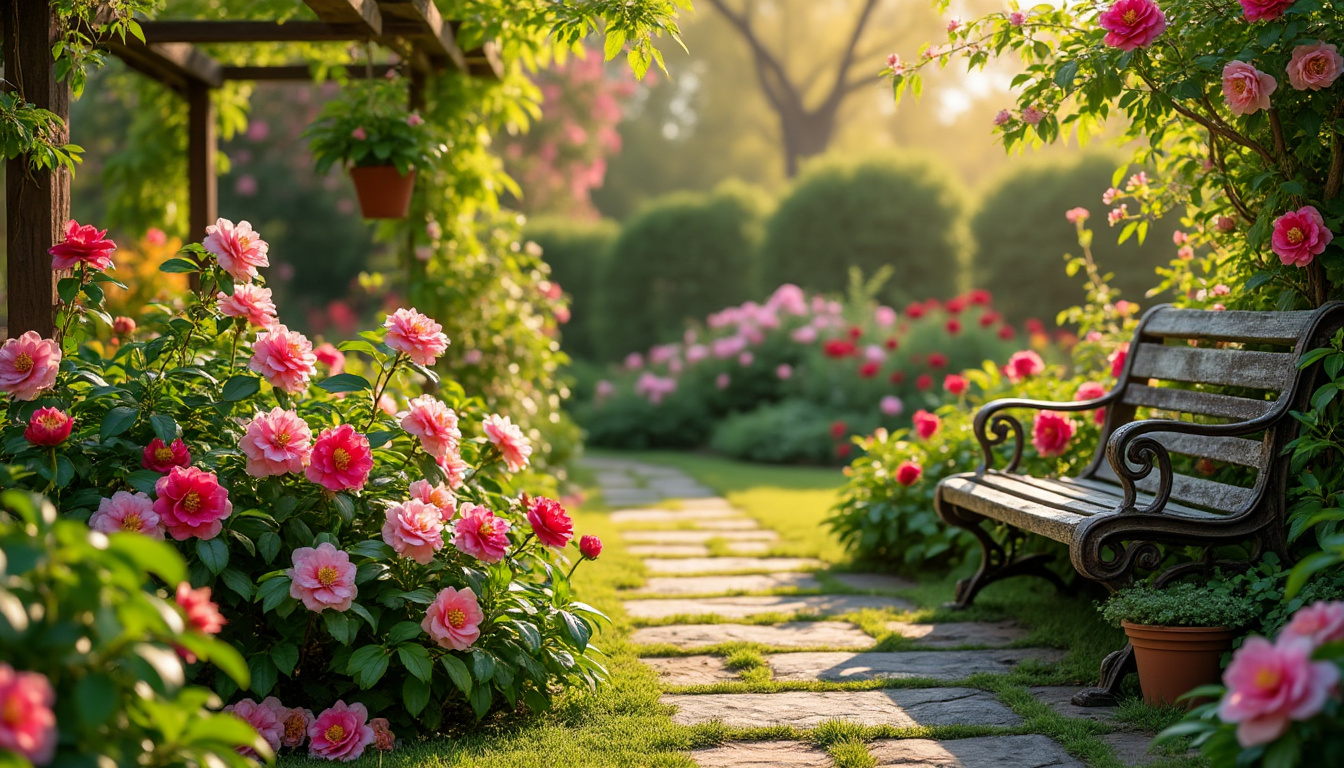For garden enthusiasts, the question of when to prune camellias is crucial for ensuring their optimal health and stunning bloom displays. These evergreen shrubs bring a splash of color to the winter landscape and require thoughtful attention to flourish. Knowing precisely when to execute pruning can enhance growth, reduce the risk of stress, and promote a vibrant array of flowers.
As we explore the ideal timing and techniques for pruning camellias, we will delve into the specifics of various types, their care needs, and how best to promote their stunning seasonal displays. We’ll also address common challenges and give a comprehensive look at the best practices related to fertilization, watering, and soil conditions.
Understanding Camellias: Types and Characteristics
Before diving into pruning, it is essential to understand the different species of camellias and their unique characteristics. Camellias are categorized primarily into a few notable species:
- Camellia japonica: Known as the Japanese Camellia, this variety is famed for its striking blooms that can appear from late winter to early spring. It thrives in USDA hardiness zones 7 to 9.
- Camellia sasanqua: This type blooms in the fall and is often more compact, reaching heights of about 10 to 12 feet. Its glossy foliage and vibrant blooms add seasonal interest to gardens.
- Camellia oleifera: Also referred to as the tea-oil camellia, this variety can endure colder temperatures, making it suitable for zone 6 gardens. It often produces semi-double blooms in the fall.
Here’s a quick comparison table of the camellia types:
| Type | Blooming Season | Height | USDA Zones |
|---|---|---|---|
| Camellia japonica | Late winter to early spring | 6–14 ft | 7–9 |
| Camellia sasanqua | Fall to early winter | 10–12 ft | 7–9 |
| Camellia oleifera | Fall | 6–12 ft | 6–9 |
Growing Conditions for Healthy Camellias
Successful growth begins with understanding the environmental needs of camellias. They thrive best in:
- Light: Partial shade or dappled sunlight is ideal. Exposure to direct afternoon sun can scorch leaves and lead to bud drop.
- Soil: Rich, well-drained, slightly acidic soil (pH 5.8–6.5) is optimal. Amending soil with organic materials ensures proper drainage and nutrient availability.
- Water: Regular watering is essential, especially for young plants. Established camellias can withstand some dryness, but monitor them closely during flowering seasons.
Ensuring these conditions are met not only promotes growth but also prepares the plant for effective pruning and flowering. Consider the growth rate, as some varieties like C. japonica can grow up to a foot per year and may require more frequent attention.
When Is the Right Time to Prune Camellias?
Timing plays a pivotal role in the pruning process of camellias. The best time to execute pruning is right after they finish blooming. This practice ensures that you avoid snipping off the flower buds that will develop for the next season.
Typically, camellias bloom at varying times depending on the species:
- Camellia sasanqua: Late fall to early winter, making late winter a suitable pruning time.
- Camellia japonica: Begins blooming from mid-winter to early spring, making late spring the best time to prune.
Signs That Indicate Pruning is Required
Certain indicators suggest that your camellias may benefit from pruning:
- Overcrowding: If branches are densely packed, limiting airflow and sunlight.
- Dead or Dying Wood: Removing affected limbs can rejuvenate growth.
- Shape Maintenance: Pruning can help maintain the desired shape, especially if plants are close to walkways or buildings.
When to plant dahlias in pots for vibrant blooms all season
How to Prune Camellias Effectively
Once the appropriate timing has been established, understanding the technique for effective pruning is key. The following steps will help guide you:
- Start by removing any dead, weak, or damaged wood using clean, sharp secateurs to minimize stress on the plant.
- Thin out areas with overcrowded growth.
- If the shrub’s shape is uneven, shorten lower branches to encourage upright growth and reshape the overall structure.
Additional Tips:
- Always cut just above a scar that indicates previous growth, which encourages optimal growth from new buds.
- Pruning should ideally happen in the late afternoon when the sun isn’t as harsh, allowing the plant to recover overnight.
Specific Techniques Based on Camellia Types
Different types of camellias may require specific approaches:
- For Camellia japonica, focus on maintaining a bushy appearance by pruning selectively to avoid removing too many flower buds.
- Camellia sasanqua can handle a more aggressive cut, so don’t shy away from hard pruning if rejuvenation is needed.
Keep in mind that over-pruning can limit blooms for several seasons, so aim to be conservative, especially with established plants. Observing their growth patterns will guide your approach effectively.
Common Mistakes to Avoid While Pruning Camellias
Pruning camellias can be an art form, and like any craft, mistakes can hinder the health of these beautiful plants. Here are key pitfalls to avoid:
- Pruning at the Wrong Time: Cutting too early or late removes potential blooms from the next season.
- Too Much Pruning: Severely cutting back can lead to a delay in blooming, making your garden less vibrant.
- Poor Tool Maintenance: Always utilize clean, sharp tools to prevent infection and damage to the plant.
- Ignoring Plant Health: Always assess the plant’s overall health before making cuts. Pruning distressed plants may exacerbate issues.
Care After Pruning
Post-pruning care is essential for recovery and new growth:
- Ensure consistent watering to help the shrub recover from the shock.
- Apply an appropriate fertilizer to help promote new shoot growth.
FAQs About Pruning and Caring for Camellias
1. When do camellias bloom?
Blooming times depend on the variety: Sasanqua camellias bloom late fall to early winter, whereas japonicas bloom from mid-winter to early spring.
2. Can camellias be grown in containers?
Yes, camellias are excellent container plants, but choose compact varieties and ensure adequate drainage.
3. How much water do camellias need after planting?
Young camellias require watering regularly for the first 1-2 years to establish, followed by less frequent watering if they’re well established.
4. What common pests affect camellias?
Watch out for tea scale and aphids, which can lead to issues like yellowing leaves and sooty mold.
5. What can cause bud drop in camellias?
Possible causes include overwatering, inadequate sunlight, and sudden temperature changes.















